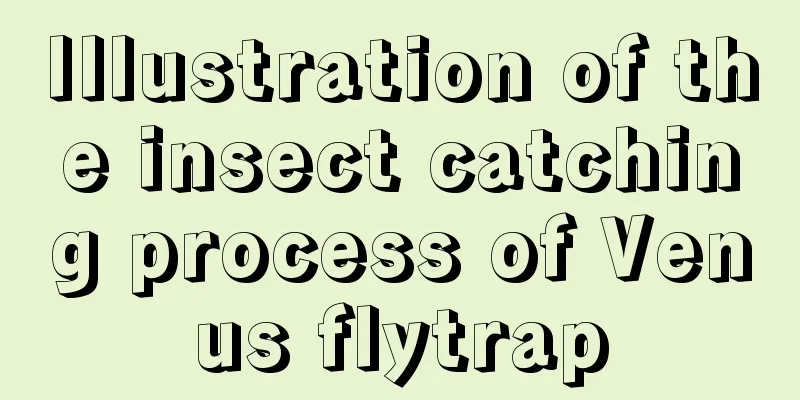Illustration of the insect catching process of Venus flytrap

Secrete nectar glands to attract insectsThe leaf margins of the Venus flytrap contain nectar glands that secrete nectar to attract insects. When an insect enters the leaf surface and touches the sensory organ twice in a row, the two petals of the Venus flytrap will quickly close. Sending signalsThe insect-catching information is not provided directly by the sensory hairs, but by a group of sensory cells at the base of the sensory hairs. When an insect stimulates a sensory cell, it sends out a weak electric current to notify the corresponding leaf. Before being stimulated, the insect trap is open at a 60 -degree angle, and when stimulated, it closes rapidly with its leaf veins as the axis. Closing of insect trapIf the Venus flytrap's sensory hairs are touched twice within 20 to 30 seconds, the insect trap will quickly close. If this time is exceeded, a third stimulation will be required for closure. The trap requires two stimulations to confirm that the insect has reached the appropriate location, rather than just clamping part of the insect and giving the insect a chance to escape. Catching speedWhen the sensory hairs of the Venus flytrap are stimulated twice in succession, the leaves will close immediately, on average, within about 0.5 seconds. Of course, some artificial garden varieties cannot reach this speed. Digestion and absorptionAfter catching the insect, the trap will remain closed for several to ten days. At this time, the insects are digested by digestive juices secreted by glands distributed on the insect trap. Once the insect is digested, the trap opens again to await the next prey. Insect shells that cannot be digested are carried away by wind and rain. The second stage of digestion requires the insect to struggle, so the insects caught by the walking insect trap are indeed alive. (Now even plants have such high IQ) |
<<: What are the common varieties of azalea
>>: How to grow Venus flytrap and what to pay attention to
Recommend
Is it a good thing for cactus to bloom white flowers?
1. Is it a good thing for cactus to bloom white f...
How often should I water the tiger plant? What should I do if I water too much?
How often should I water the tiger plant? When gr...
How to identify a pouring teapot
1. Stem The stem of the teapot is single or clust...
What are the effects of soaking chrysanthemum and honeysuckle together in water?
1. The efficacy of chrysanthemum Chrysanthemum is...
How to prune kumquat
How to prune kumquat branches and leaves Kumquats...
How to propagate the lotus lantern: cutting, sowing, and hydroponic propagation methods
How to reproduce The common propagation methods o...
How to judge whether the rose cuttings have survived (how to judge whether the rose cuttings have taken root and survived)
How to judge whether the rose cuttings survive No...
When to plant Guangdong dahlias
1. Root division It can be propagated by root div...
What flowers bloom in early summer?
1. Trumpet creeper Trumpet creeper blooms in earl...
How to fertilize Forsythia? Do you need to fertilize the transplanted seedlings?
1. How to fertilize Forsythia 1. Fertilization in...
The difference between Clivia and Amaryllis
1. Leaf Difference The leaves of Clivia are dark ...
How and when to prune dianthus
1. Pruning time Pruning dianthus is usually done ...
The difference between red tassel flower and albizzia
The difference between red tassel flower and albi...
When is the best time to repot Anthurium? Repotting methods and precautions
Anthurium repotting time Anthurium needs to be re...
How to deal with the fragrant dragon blood tree after it blooms and how to prune it after it blooms
Treatment after flowering of Dracaena fragrans It...









